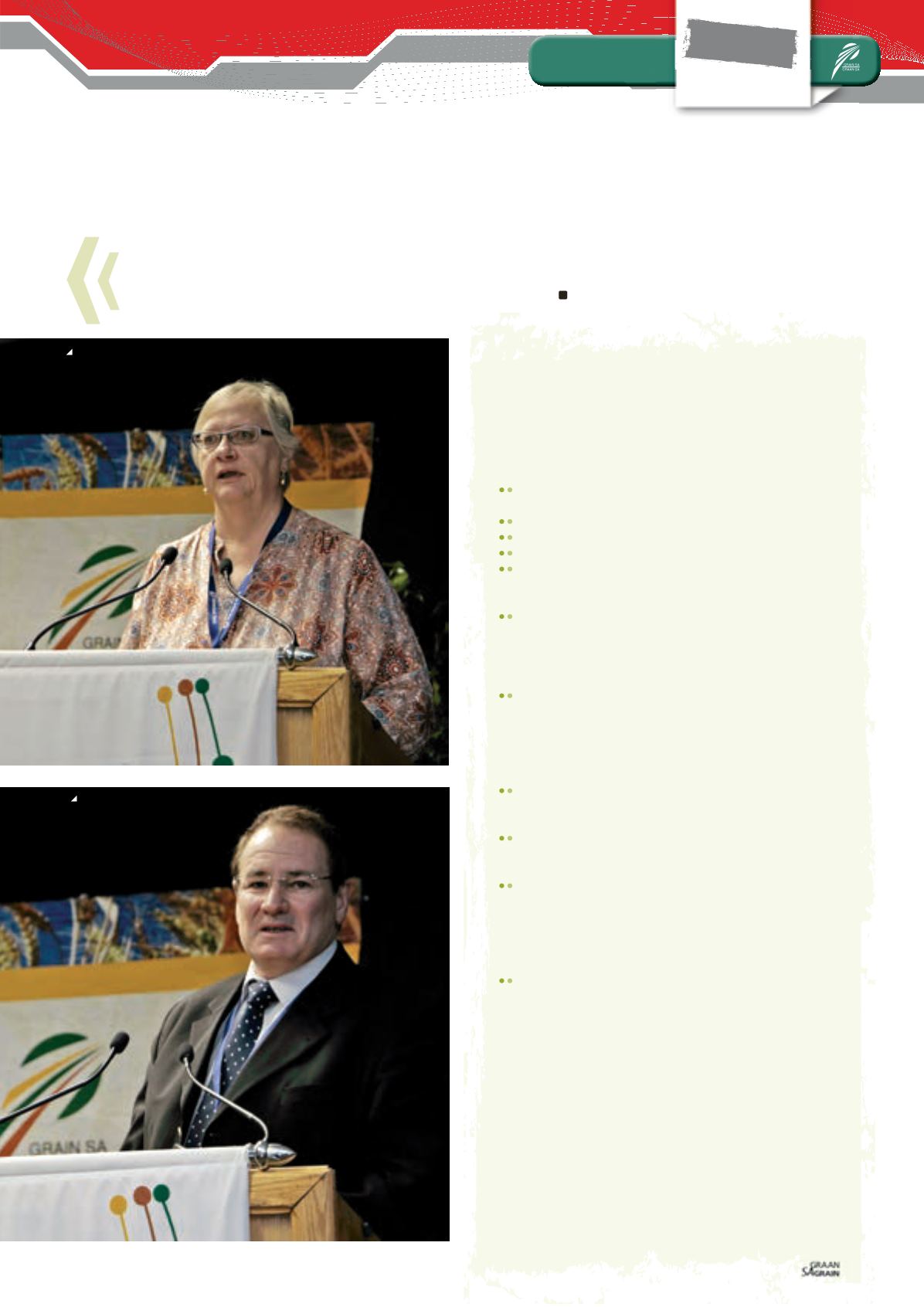

The global trade environ-
ment and South Africa
Dr Erhard Briedenhann (owner of MIDS) discussed some is-
sues which influence trade in this industry:
Political uncertainty affects everyone all around the
world.
Currency: R/USD and USD/ARS.
Global weather patterns – influence price movements.
Demand side – China has a huge influence.
Supply and demand scenarios around the world influ-
ence prices. When stocks-to-use ratios are very high,
prices will come down.
Parities between the different commodities are moni-
tored for an indicator in decision making as to which
crops should be planted. For example, soybeans-to-
maize is in healthy ratio and soybean production rather
than maize will be encouraged by this.
Tax structures – these are more of an issue globally rather
than in South Africa, e.g. Argentina has had high export
taxes on soybeans and soybean meal and quantitative
restrictions on wheat and maize, but this is changing with
the new government and their competitiveness against
us will be significant in the future.
Ease of doing business is hampered by bureaucratic in-
fluences with extensive documentation and paperwork,
e.g. phyto-sanitary issues.
Import duties can impact the trade environment with re-
gard to the quantity and the uncertainty, since any unex-
pected change in duty has a dramatic impact.
Logistics are a challenge. Both the ease of moving goods
overland to ports and the efficiency levels are important
for trade. These need maintenance and investment if we
are to stay competitive. Other competitors, e.g. Brazil,
have spent billions building ports to heighten the effi-
ciency of exporting their product.
Freight is always part of the trade equation. Durban har-
bour presents numerous challenges in this regard. We
face competition from countries which are loading from
the fields nearby directly into the vessels, which is more
economic than moving produce from the grain-growing
regions of South Africa to Durban.
A major concern in the poultry industry is the imports
from the EU of ‘bone-in’ portions of chicken. It translates into
200 000 tons of chicken or 170 million chickens per year over
the past three years.
Without intervention, loss of market into the sector is poten-
tially as much as -490 000 tons of feed/year, -230 000 tons
yellow maize consumed per year and -113 000 tons oilcake
per year. If imports continue to increase, further huge losses
including further job losses will be realised.
Product information
29
April 2017
FEEDBACK
Congress
Special
Looking ahead
She urges that the marketing and promotion of South African
products be prioritised, quality and standards need to be met
and supply needs to be consistent. The constraints to our market
participation will probably be sanitary and phyto-sanitary measures
and restricted market access because of tariffs. Van Dijk believes the
grain industry deserves to be prioritised because of available export
opportunities.
Gerda van Dijk
The grain policy environment
Dr Erhard Briedenhann

















